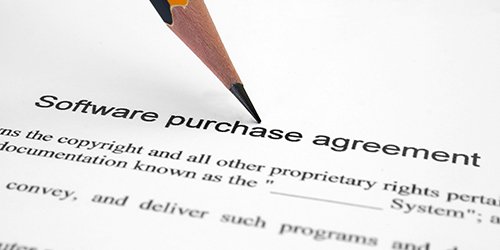
Managing software licenses effectively is pivotal in the modern business landscape. With software applications driving a multitude of business processes, ensuring that you have the appropriate licenses for the software you’re using not only keeps you legally compliant but also can offer significant cost savings and operational efficiencies. Here are some best practices to consider when managing software licenses.
1. Understand Different Licensing Models
There are various software licensing models, including:
- Perpetual Licensing: This gives you the right to use the software indefinitely. You usually pay a one-time fee upfront.
- Subscription Licensing: You pay on an ongoing basis to use the software. This could be monthly, annually, etc.
- Concurrent Use Licensing: This type is based on a set number of users that can access the software at the same time.
- Site Licensing: Allows the software to be used on any computer within a specific geographical location.
- Volume Licensing: Meant for businesses, allowing them to purchase software in bulk, often at a discount.
Understanding the nuances of each model helps in making informed decisions about purchasing and renewing licenses.
2. Centralize License Management
Using a centralized software license management tool or system offers numerous advantages:
- Visibility: You can see all your licenses in one place, making it easier to track usage and compliance.
- Efficiency: Renewals, upgrades, and new purchases can be managed more efficiently.
- Cost Management: You can quickly identify unused licenses or opportunities to consolidate software purchases.
3. Regularly Audit Software Usage
Regular audits help in identifying:
- Unused Licenses: Licenses for software that’s no longer in use can be retired or repurposed.
- Shadow IT: Software that’s been installed without the IT department’s knowledge. This can pose security and compliance risks.
- Overused Licenses: Situations where the number of users exceeds the number of licenses. This is a compliance risk.
4. Maintain Proper Documentation
Keep records of:
- Proof of Purchase: This includes receipts, invoices, and other transaction records.
- License Agreements: Always keep a copy of the end-user license agreement (EULA) for each software product.
- Renewal Dates: So you can take action before a license expires.
5. Stay Informed about Compliance Requirements
Software vendors can change their licensing terms, and it’s up to you to stay informed. Non-compliance can lead to hefty fines and legal complications. Regularly review the terms of your software licenses and be aware of any changes.
6. Assign a Dedicated License Manager
Whether it’s a full-time role or part of someone’s responsibilities, having a dedicated license manager ensures consistent oversight. This person should be responsible for purchasing, renewing, and retiring licenses, as well as ensuring compliance.
7. Plan for the Future
Anticipate future needs by:
- Monitoring Trends: New software or upgrades that might become necessary as the company grows or technology changes.
- Budgeting: Set aside funds for unexpected software purchases or renewals.
8. Consider Software-as-a-Service (SaaS)
SaaS solutions can sometimes offer more flexibility than traditional software licenses. They’re typically subscription-based, which can simplify license management. They also often come with automatic updates, ensuring you’re always using the latest version.
9. Educate Your Staff
Your employees play a crucial role in software license management:
- Installation Protocols: Ensure they understand the procedures for installing new software.
- Usage: Educate them about the importance of adhering to license agreements.
10. Review and Optimize Regularly
The software needs of an organization can change over time. Regular reviews allow you to adjust your software portfolio to ensure it’s meeting current needs and is in full compliance.
Conclusion
Effective software license management is crucial in today’s digital-centric business environment. By understanding the intricacies of licensing models, centralizing management, conducting regular audits, and planning for the future, organizations can ensure they are both compliant and cost-effective in their software usage. Adopting these best practices will not only keep you legally in the clear but also optimize your resources and streamline operations.



